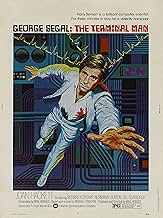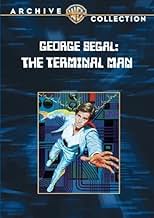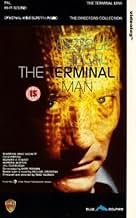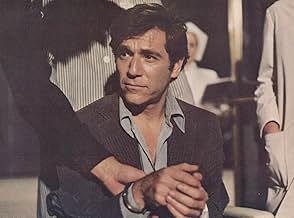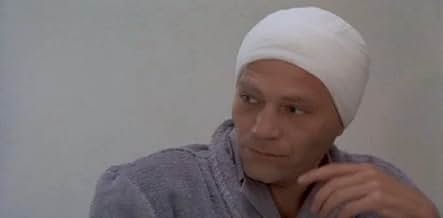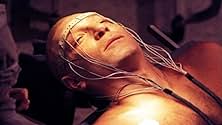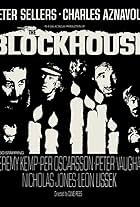Hoping to cure his blackout seizures which turn him temporarily extremely violent, a computer scientist agrees to an experimental brain computer chip implant surgery.Hoping to cure his blackout seizures which turn him temporarily extremely violent, a computer scientist agrees to an experimental brain computer chip implant surgery.Hoping to cure his blackout seizures which turn him temporarily extremely violent, a computer scientist agrees to an experimental brain computer chip implant surgery.
- Dr. John Ellis
- (as Richard A. Dysart)
- Det. Capt. Anders
- (as Normann Burton)
- Director
- Writers
- All cast & crew
- Production, box office & more at IMDbPro
Storyline
Did you know
- TriviaCrichton was fired from writing the screenplay due to the fact that his script did not follow the novel (which he had written) closely enough.
- GoofsAt the cemetery, the usual mechanism for lowering the coffin into the grave is missing. There aren't even any straps in place to lower it manually.
- Quotes
Benson: [mumbles]
Dr. John Ellis: [operating on Benson] What was that?
Dr. Robert Morris: Patient.
Dr. John Ellis: You all right, Mr. Benson?
Benson: [groggily] Fine... fine...
Dr. John Ellis: Any pain?
Benson: No...
Dr. John Ellis: Good. Just relax now.
Benson: You too doctor...
- Alternate versionsOn its release at 2003 Edinburgh Film Festival, there was a director's cut which Hodges had cut out the beginning with the doctor looking at photographs of Harry Benson.
- ConnectionsFeatured in Cinemacabre TV Trailers (1993)
- SoundtracksGoldberg Variation No. 25
by Johann Sebastian Bach (as J.S. Bach)
Played by Glenn Gould
Courtesy Columbia Records
His wife leaves him, and it looks like his outbursts will have him traveling through the criminal justice system which can do nothing for this situation or maybe he will wind up shot dead by some would be victim.
So some scientists think that Benson could be a beneficiary of an experimental procedure in which a small computer is implanted in his brain and his epilepsy is controlled by impulses the computer transmits. Post operation, things seem to be a success, but Dr. Janet Ross (Joan Hackett) discovers that Benson's brain is becoming addicted to the impulses, and in time - and she actually can calculate the time - he will have more frequent and severe violent outbursts.
But before she can do any kind of medical intervention, Benson leaves. Apparently he has prearranged an escape with some woman he barely knows, sporting a blond wig so you can't tell he just had surgery.
So the last half of the film is just Benson having those predicted seizures and becoming horrifically violent during each one. It doesn't have the pathos or irony of the Frankenstein monster's trek through the German countryside. Segal just begins to shake, his eyes roll up in his head, and he does violence to whomever and with whatever is at hand. That's it. That's essentially all that the last half is.
George Segal never really got the credit he deserved for some of the really good roles he had in the 70s. This is not one of those good roles, and I really don't see how he or anybody else but the writer could have saved a film that is really only half there. I'd give the pre-escape part of the film a 7 or 8. I'd give the last half a three. This is where I come up with my 5/10 rating.
- How long is The Terminal Man?Powered by Alexa
Details
Box office
- Gross US & Canada
- $224,542
- Runtime1 hour 44 minutes
- Sound mix
- Aspect ratio
- 1.85 : 1
Contribute to this page



